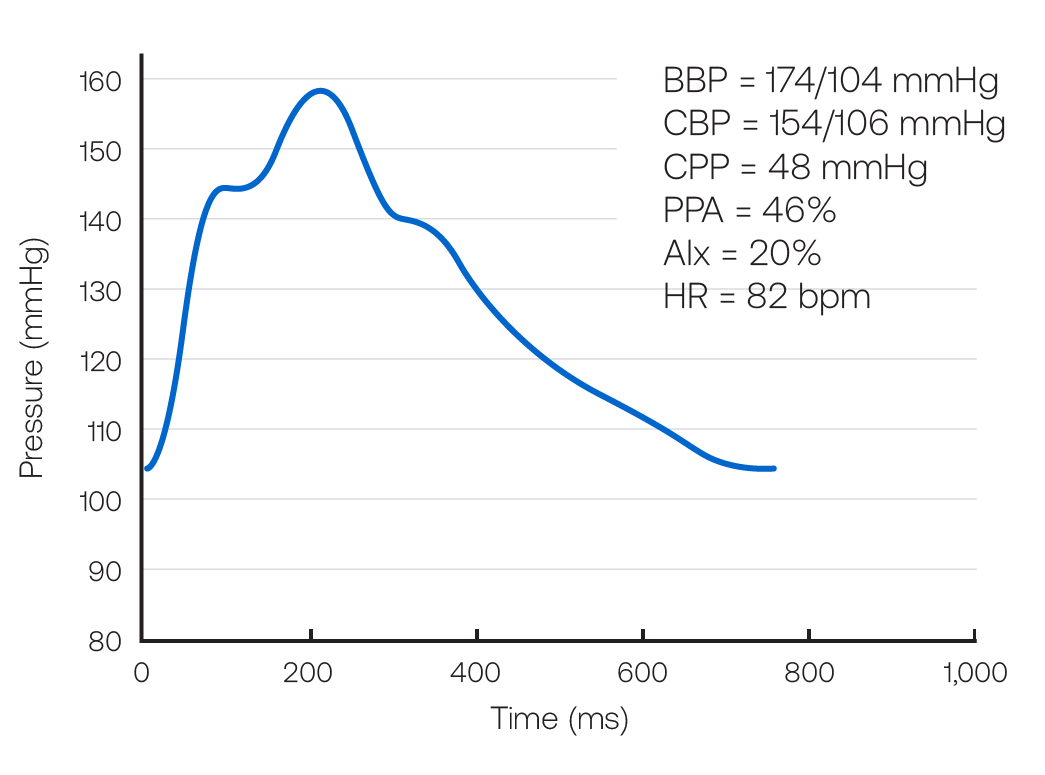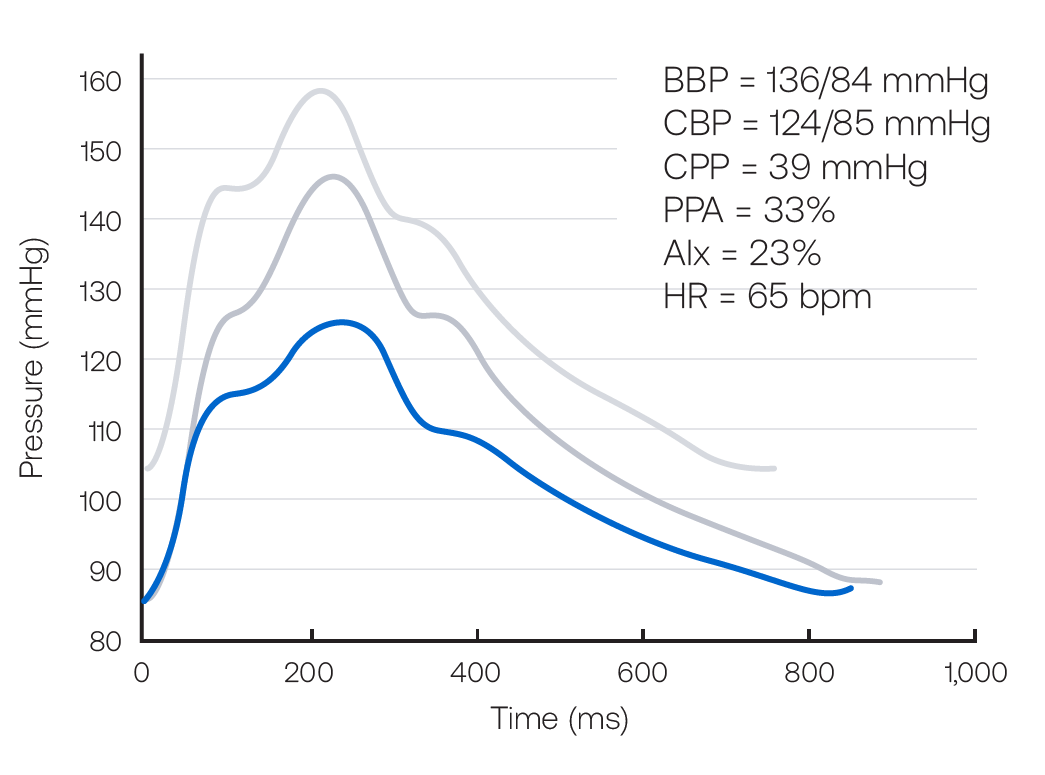
64-Year-Old Male with Hypertension and Comorbidity
February 14, 2024
58-Year-Old African American Female with Diabetes and Uncontrolled Hypertension
February 14, 2024Personalized Treatment Regimen Following Pulse Wave Analysis
45-Year-Old Male with Uncontrolled Hypertension
Patient Medical History
- 45-year-old male with diabetes and obesity
- Current Rx regimen
- Metformin 1 g twice daily
- Perindopril 5 mg daily
- Indapamide 1.25 mg daily
Initial Digital Vascular Biomarker Assessment
| Brachial Blood Pressure | 174/104 mmHg |
| Central Systolic Pressure | 154 mmHg |
| Central Pulse Pressure Amplification | 46% |
| Augmentation Index | 20% |
Initial Assessment Interpretation
The central pressure profile indicates a pulse pressure amplification of 46%. The central systolic pressure of 154 mmHg is more than the desired value of 124 mmHg. The Augmentation Index (AIx) is 20%.
Figure 10. Central Pressure Waveform

BBP indicates brachial blood pressure systolic/diastolic; CBP, central blood pressure systolic/diastolic; CPP, central pulse pressure; AIx, augmentation index; HR, heart rate; bpm, beats per minute.
Intervention
The first step is treatment for the elevated brachial blood pressure. Given the heart rate of 82 beats per minute, atenolol of 50 mg daily is prescribed.
Follow Up Digital Vascular Biomarker Assessment
| Brachial Blood Pressure | 158/86 mmHg |
| Central Systolic Pressure | 147 mmHg |
| Central Pulse Pressure Amplification | 20% |
| Augmentation Index | 32% |
Follow up Assessment Interpretation
The patient returns 3 weeks later taking atenolol, perindopril, and indapamide. The pulse waveform analysis is shown in Figure 11. Predictably (see Table 1), although the brachial blood pressure improved, the pulse pressure amplification fell from 46% to 20%. Improvement in the brachial pressure is attended by less desirable changes in the central pressure profile. The central systolic pressure of 147 mmHg continues to be more than the desired value of 124 mmHg. The AIx increased from 20% to 32%. Amlodipine is added to further reduce brachial pressure and to offset the changes in central pressure from atenolol treatment.
*Townsend RR et al. Journal of Clinical Hypertension. 2015; 17:7, 503–513.
http://bit.ly/2gc5mdD
Figure 11. Central Pressure Waveform

Intervention
Amlodipine is added to further reduce brachial pressure and to offset the changes in central pressure from atenolol treatment.
Final Digital Vascular Biomarker Assessment
| Brachial Blood Pressure | 136/84 mmHg |
| Central Systolic Pressure | 124 mmHg |
| Central Pulse Pressure Amplification | 33% |
| Augmentation Index | 23% |
Final Assessment Interpretation
After some time, the patient’s brachial blood pressure shows improvement, while the central systolic pressure of 124 mmHg is near the desired value of 124 mmHg. The central pulse pressure amplification is 33%. The AIx fell from 32% to 23%. No further changes were made to this patient’s Rx medication regimen. This example shows the added value of central pressure measurements in a scenario where improvement in brachial pressure is not attended by a parallel improvement in central pressures.
*Townsend RR et al. Journal of Clinical Hypertension. 2015; 17:7, 503–513.
http://bit.ly/2gc5mdD
Table 1. General Effects of Antihypertensive Drugs on Central Pressures
| CSP | AIx | |
|---|---|---|
| Angiotensin receptor blockers | ||
| Angiotensin-converting enzyme inhibitors | ||
| ß-Blockers | ||
| Calcium channel blockers | ||
| Diuretics | ||
| Organic nitrates |
CSP indicates Central systolic pressure; AIx, Augmentation Index
Figure 12. Central Pressure Waveform

Other Case Studies
